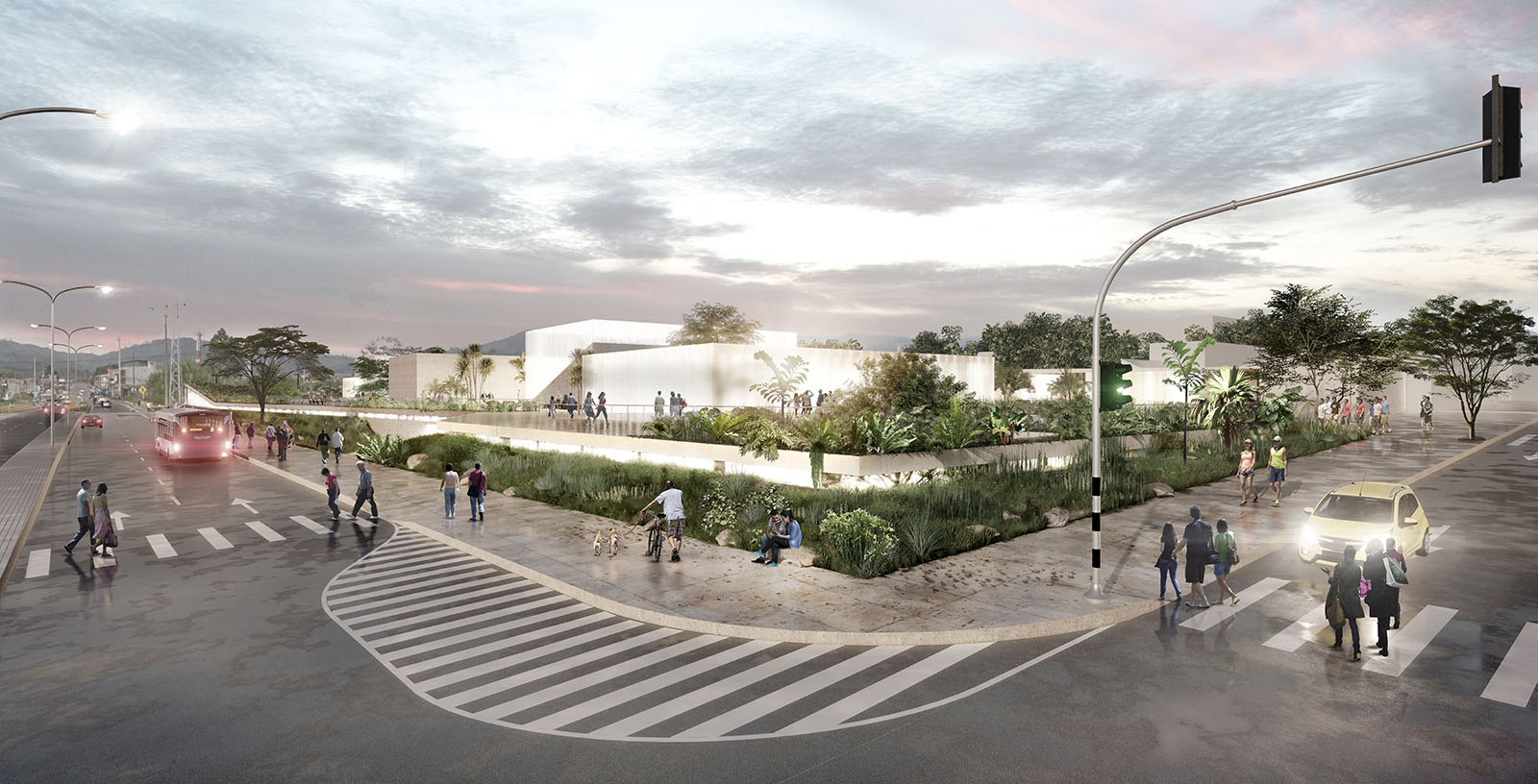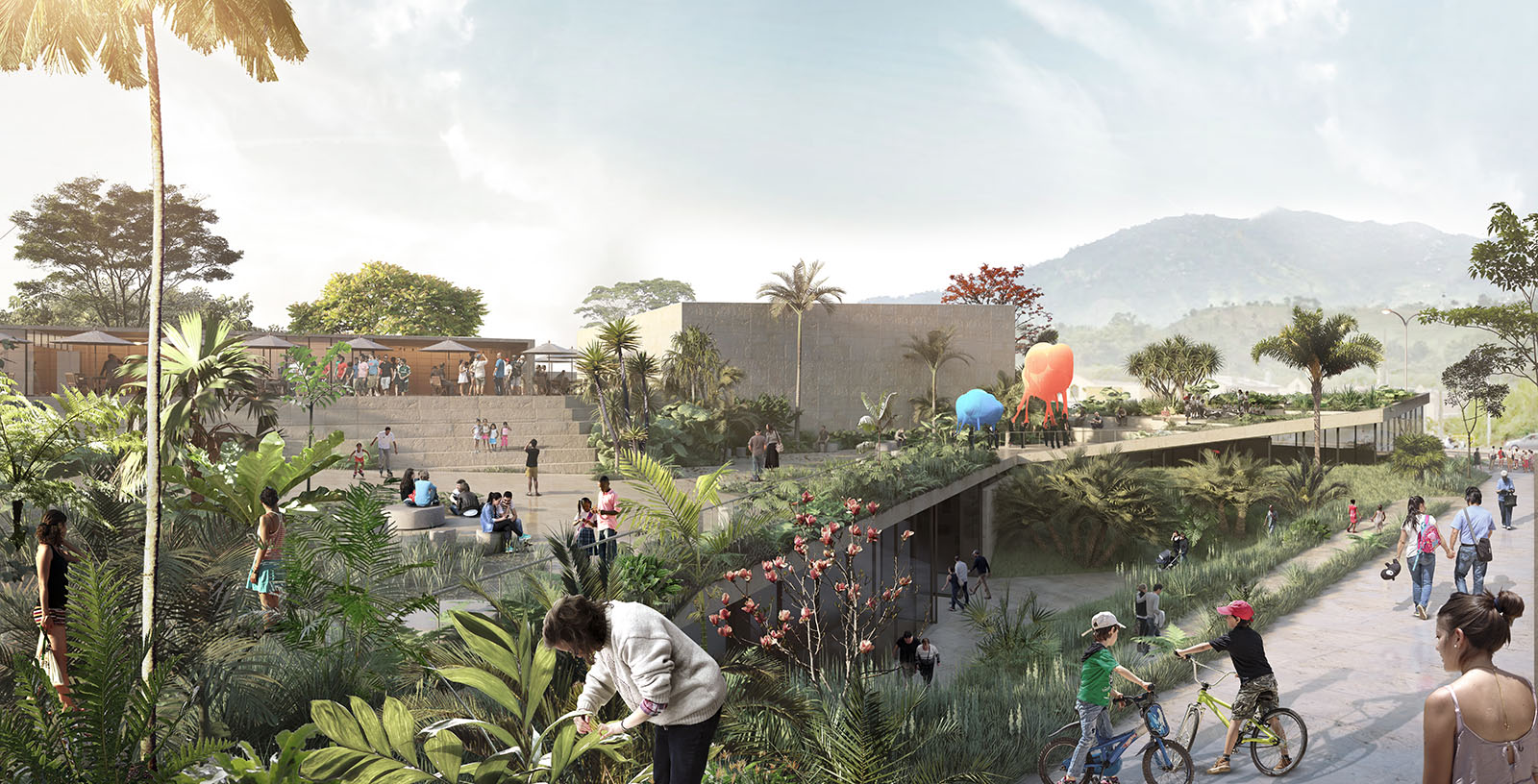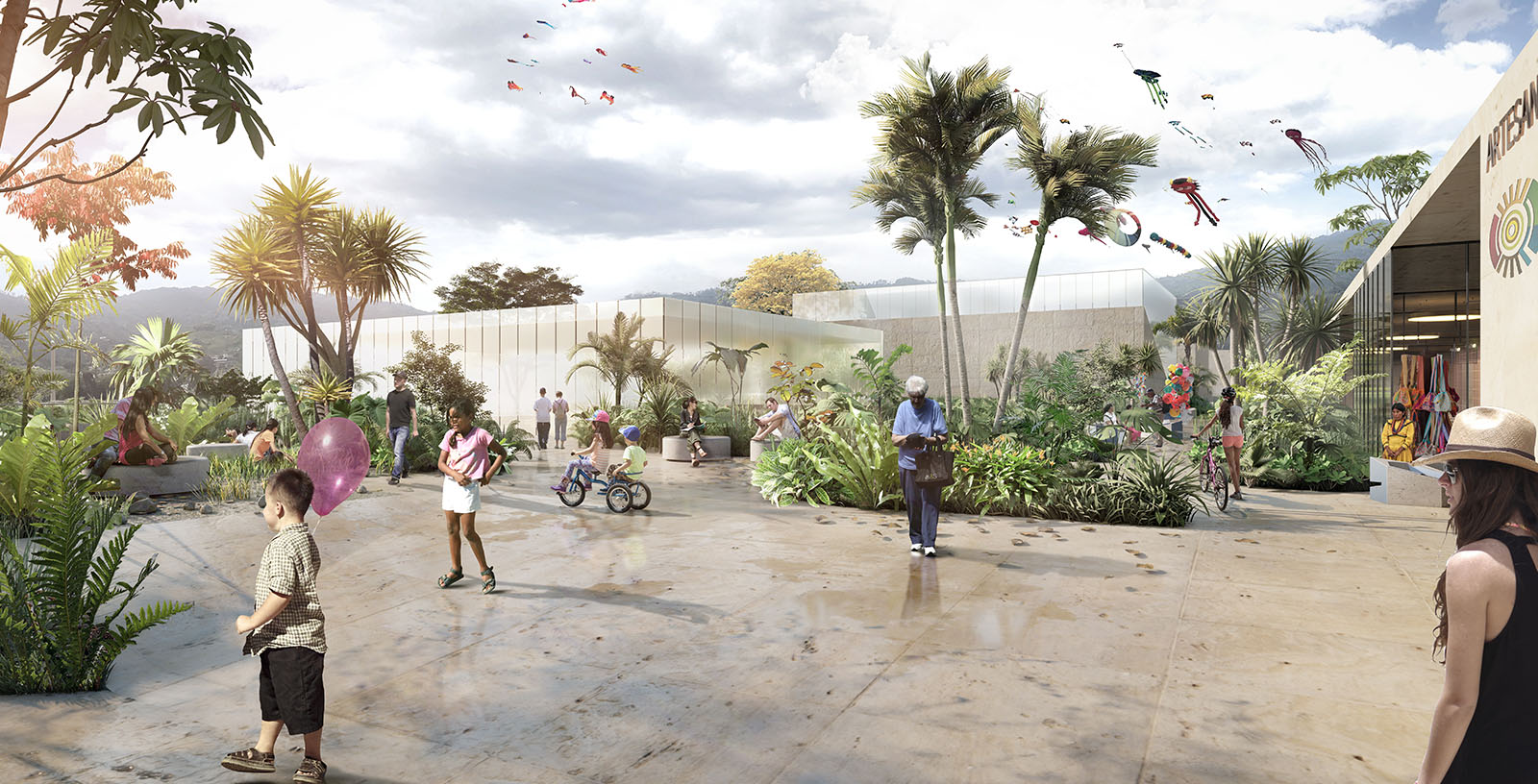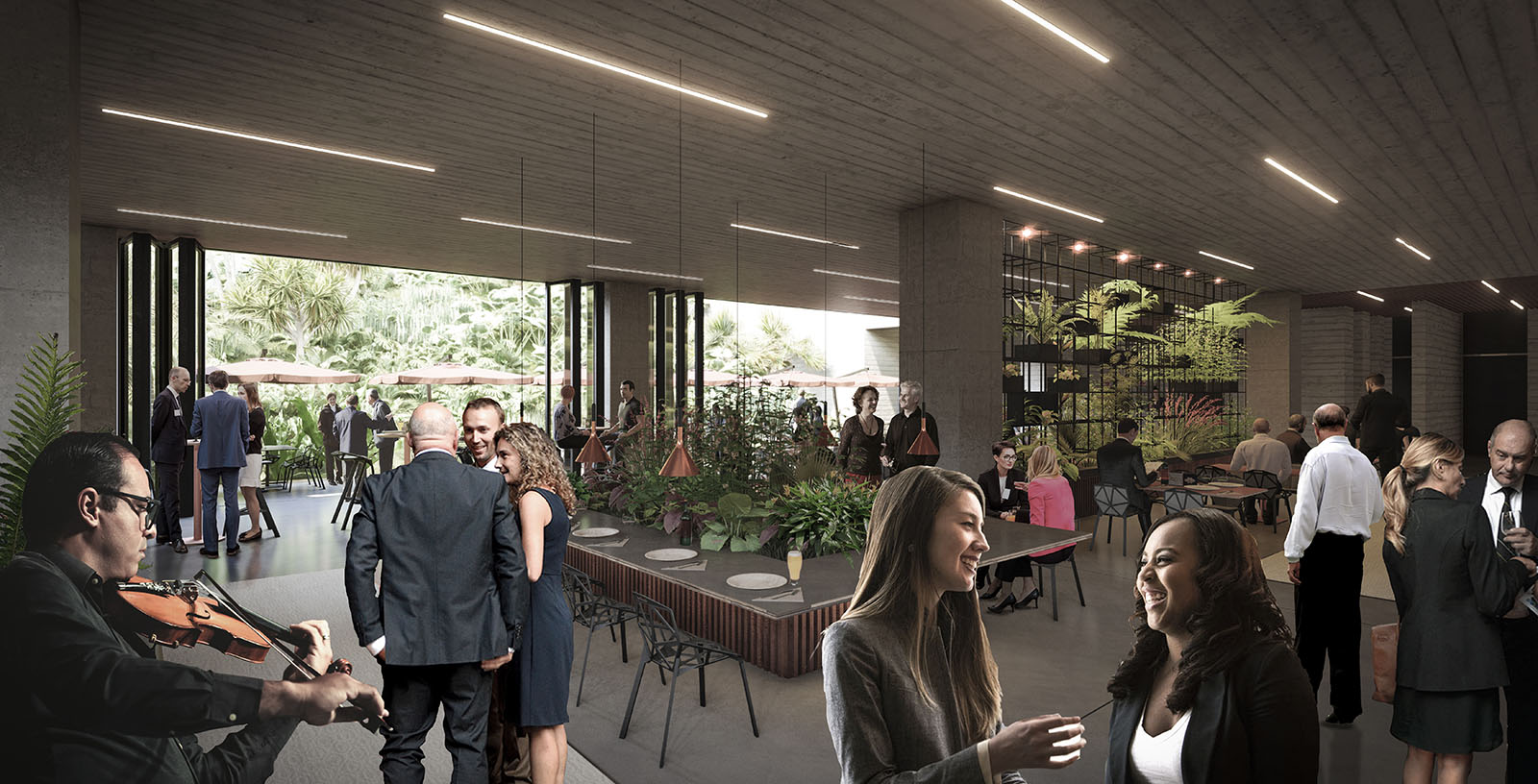Science and Biodiversity Center of Risaralda
Colombia
Located in the municipality of Dosquebradas, in the department of Risaralda (Colombia), the Science and Biodiversity Center of Risaralda (CiBi) is a mixed-use building conceived as a strategic piece of infrastructure for the urban, cultural, and touristic development of the region. Risaralda is internationally recognized for its extraordinary biodiversity—it is the second most diverse region in the world in terms of ecosystems—but it also faces significant urban challenges, such as having one of the lowest public space ratios per capita in Colombia.
The project, developed by IDOM, addresses a dual objective: on one hand, to provide the city with high-quality, inclusive public space; on the other, to create a science and biodiversity center that serves as a tourist, educational, and scientific attraction. The building has a total constructed area of 11,700 m², of which 6,700 m² correspond to a landscaped roof accessible from the surrounding streets. This roof is designed as a public park and a living atlas of the region’s biodiversity, offering visitors a unique experience of nature in an urban setting.
The functional program is concentrated on the semi-basement level, which allows for complete control of natural light and enhances energy efficiency. This level houses several exhibition areas, an auditorium with a capacity for 500 people (expandable to 750), a dome cinema, laboratories, multipurpose rooms, a restaurant, a café, commercial areas, a children’s garden, and a gift shop—ensuring the center’s long-term economic sustainability and operational versatility.
The entire building is clad in Royal Veta stone, a local limestone that, together with the landscape design, reinforces the image of a monumental architecture overtaken by nature. The contrast between the stone-clad exterior and the exposed concrete interior creates a rich spatial experience aligned with the project’s environmental and cultural values.
The Science and Biodiversity Center of Risaralda is a compelling example of how architecture can drive urban, educational, and ecological transformation—connecting knowledge, nature, and community in a single, integrated space,












